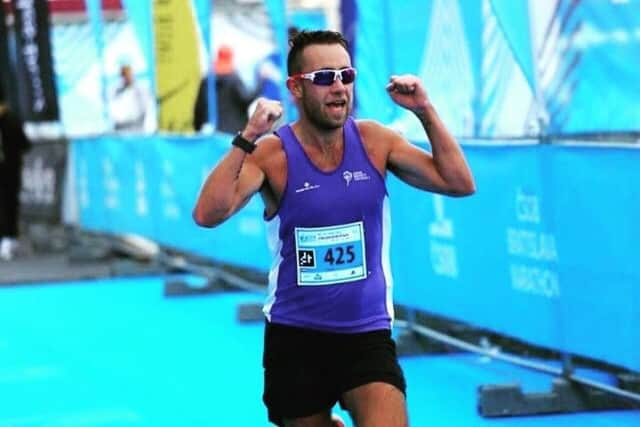Runner who broke his leg is back on the road thanks to op in Leeds


When Nick Little suffered a serious injury to his shinbone competing in a race in Leeds he feared his running days might be over.
Nick, 27, a keen long-distance runner who clocks up around 75 miles a week, was devastated. He wasn’t able to run for three months and could barely walk. Every step was painful and he had to hobble on crutches just to get around.
Advertisement
Hide AdAdvertisement
Hide AdNow, after having surgery at Spire Leeds Hospital, Nick is back at competition level after making a sensational comeback to running in April this year and achieving his fastest ever running time in the Bratislava Marathon, achieving seventh place out of 6,000 runners.


The problem first started four years ago for Nick, who is single and currently teaching in Dubai. After graduating from Leeds Metropolitan University, he was teaching at schools in Leeds and competing in a series of races around the UK when he fractured the tibia in his right lower leg.
However, it was not correctly diagnosed straight away. It was thought to be shin splints and doctors prescribed rest.
“I had a range of diagnoses from doctors, but all without confirmation or any actual treatment prescribed other than rest. I didn’t think it was shin splints as I had had those before and this injury felt very different. I suspected it was a stress fracture.”
Advertisement
Hide AdAdvertisement
Hide AdNick desperately wanted to return to running and he started a cycle of resting for 2-4 months and then running before resting again. However, the pain kept returning. It reached its worst point in April 2017 when the day after training he physically couldn’t walk.
He asked his GP for a referral and went to see Professor Nick Harris, consultant orthopaedic surgeon at Spire Leeds Hospital.
Prof Harris suspected a stress fracture and arranged an MRI and CT scan immediately which confirmed this diagnosis.
Prof Harris said: “Stress fractures of the tibia are some of the most serious stress fractures of the lower leg as most of the body weight is supported by the tibia. They are difficult to diagnose and even more difficult to get to heal. Mr Little wanted to try and avoid surgery in the first instance so he chose a non-surgical route which involved wearing a walker boot for six weeks and avoiding running for another six weeks. ”
Advertisement
Hide AdAdvertisement
Hide AdHowever, Nick was determined to return to running and for the next six months slowly built up to longer distances. Unfortunately the pain returned and he went back to Prof Harris.
“We had a very frank conversation about my options. We had tried the non-surgical route and I had not been able to return to competitive running as planned. So it was not a dilemma at this point to choose the surgical route that we had originally tried to avoid because after three years of the same issue I just wanted to be done with the injury and improve my running in the long term.”
In May 2018 Nick underwent a tibial nailing procedure where a metal rod is inserted inside the tibia bone to share the load that goes through the tibia when impacting the ground. Surgery involves an incision being made at the level of the knee and a metal rod 10mm in diameter and 34.5 cm in length is inserted into the bone. It is then secured with screws at the level of the knee and ankle.
Surgery went exactly as planned and after two weeks of rest he was able to return to work.
Advertisement
Hide AdAdvertisement
Hide AdNick said, “I was amazed at how quickly my recovery happened. I was a little stiff at first however I was able to move around well enough and it only took a further couple of weeks to get back to fairly normal mobility. A prescribed rehab regime started soon after to build back the muscle that had been lost due to resting.”
Nick’s rehab was further boosted by the use of the state-of-the-art Alter G anti-gravity treadmill at Spire’s physio, rehabilitation, sports medicine and advanced performance centre. The Alter G removes the normal impact on joints caused by the body’s own weight.
“I was amazed at being able to run so quickly after surgery and was very lucky to be able to use the anti-gravity treadmill to boost my recovery programme. Even if I had taken the non-surgical route I’d only be halfway through the rest period at this stage.”
Further scans following the rehab period revealed the fracture had healed and Nick was able to make his planned move to Dubai. He continued to build up his fitness. He had a further scan in Dubai in December which showed the stress fracture had fully healed.
Advertisement
Hide AdAdvertisement
Hide AdNick made a sensational comeback in April in the Bratislava Marathon 2019 achieving his fastest ever time of 2:43:39, a time under the UK Championship Standard marker and was placed 7th of around 6,000 runners.
Nick is planning to run in a couple of races in the UK in the next few months. His next major goal will be to lower his personal best at the Valencia Marathon in December this year.